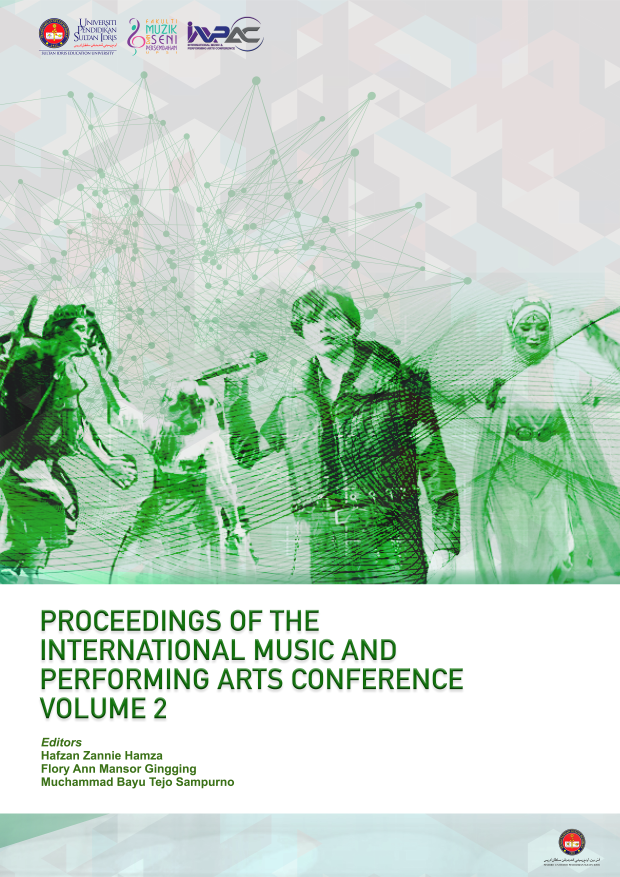The SOUL of Culture and Performing Arts in Silliman University: A Study on Strength, Outstanding Performance, Unity, and Legacy in Cultural Education
DOI:
https://doi.org/10.37134/impac.v2.10.2024Keywords:
strength, unity, legacy, outstandingAbstract
This ethnographical study explores the cultural dynamics of Silliman University’s Culture and Performing Arts, focusing on how the institution’s performing arts community embodies the principles captured by the acronym SOUL—Strength, Outstanding Performance, Unity, and Legacy. Through an ethnographic approach, the study investigates the everyday realities, experiences, and practices of performers, staff, and administrators, offering insights into the institution’s rich heritage and global competitiveness. Data were collected over a one-year using in-depth interviews and vignettes from 40 participants, including performing artists (dancers, singers, instrumentalists, and actors), administrators, and support staff. The findings reveal that the culture of Silliman’s performing arts community is grounded in a solid academic foundation, supported by high-quality resources and iconic performance venues that nurture growth and innovation. Key findings highlight the community's ability to harmonize tradition and modernity, fostering alumni contributions to global cultural landscapes. The study underscores the strong unity among faculty, staff, and students, driving collaboration and collective success. Silliman's adaptability ensures the performing arts program's legacy endures as a dynamic force in local and global contexts. Silliman’s ability to adapt to changing trends while preserving its cultural heritage ensures the legacy of its performing arts program as a dynamic force within both local and global contexts. This research illustrates that the performing arts culture at Silliman University is defined by its strength, excellence, unity, and adaptability—factors that sustain and amplify its influence on the global cultural community. The findings highlight the necessity of merging tradition with innovation to maintain the institution's performing arts legacy's relevance and impact in the challenges of globalization difficulties.
Downloads
References
Benkeser, P. (2008). Connecting music and developmental domains: Creative arts and music. Perspectives, 3(3), 4–5.
Buenconsejo, J. (2017). Resilient music at the margins.
Byram, M., & Kidd, R. (1978). The performing arts: Culture as a tool for development in Botswana. https://www.jstor.org/stable/40979539
Casocot, I., et al. (2013). Handulantaw: Featuring fifty Sillimanian movers of culture and the arts (2nd ed.). Silliman University Cultural Affairs Committee.
Hallquist, M. (2002). Journal of music and movement-based learning (p. 25).
Hattie, J. (2009). Visible learning: A synthesis of over 800 meta-analyses relating to achievement. Abingdon: Routledge.
Lynch, D., Madden, J., & Doe, T. (2015). Creating the outstanding school. https://www.researchgate.net/publication/280979881_Creating_the_Outstanding_School
McCarthy, K., Brooks, A., Lowell, J., & Zakaras, L. (2001). The performing arts in a new era. https://www.rand.org/content/dam/rand/pubs/monograph_reports/2007
Merriam-Webster. (n.d.). Legacy. Merriam-Webster.com dictionary. Retrieved from https://www.merriam-webster.com/dictionary/legacy
Merriam-Webster. (n.d.). Outstanding. Merriam-Webster.com dictionary. Retrieved from https://www.merriam-webster.com/dictionary/outstanding
Merriam-Webster. (n.d.). Unity. Merriam-Webster.com dictionary. Retrieved from https://www.merriam-webster.com/dictionary/unity
Merriam-Webster. (n.d.). Strength. Merriam-Webster.com dictionary. Retrieved from https://www.merriam-webster.com/dictionary/strength
Reeves, S., Kuper, A., & Hodges, B. D. (2008). Qualitative research methodologies: Ethnography. British Medical Journal, 337, a1020. https://doi.org/10.1136/bmj.a1020
Storey, J. (1998). Cultural theory and popular culture: A reader. https://www.amherst.edu/media/view/88660/original/Williams
Sugbo, V. (2018). Representation, meaning, and identity: Philippine culture and arts studies.
Wiggins, G. (2012). Seven keys to effective feedback. Educational Leadership, 70(1), 11–16.
Wolcott, H. F. (2008). Ethnography: A way of seeing. Plymouth, UK: AltaMira Press. https://su.edu.ph/su-ranks-8th-in-2020-ph-university-ranking
Downloads
Published
Issue
Section
License
Copyright (c) 2024 Diomar C. Abrio (Author)

This work is licensed under a Creative Commons Attribution-NonCommercial-NoDerivatives 4.0 International License.
Authors retain copyright and grant the Proceedings of the International Music and Performing Arts Conference (IMPAC Proceedings) the right of first publication.
This licence permits unrestricted use, distribution, and reproduction in any medium, provided the original work is properly cited.




